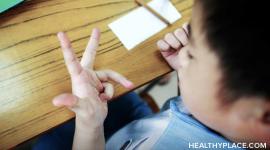Learning Disability Symptoms and Signs for Concerned Parents

Learning disability symptoms can sometimes be fairly easy to spot. Many times, however, they aren’t straightforward. Symptoms can seem like they’re unrelated to a learning disability, and parents are often surprised to learn that something their child is having difficulty with is the result of a learning disability. To further complicate matters, all kids are unique. They develop at varying rates, and their strengths, abilities, and problems differ. This can make it hard for concerned parents to know if their child has learning disability symptoms and signs. The following information will help you sort things out.
Before we proceed, it’s important to keep in mind that the presence of some symptoms doesn’t automatically mean that a child has a learning disability. Look for clusters of symptoms that don’t improve as your child grows.
Early Signs of Learning Disabilities
Occasionally, signs of learning disabilities are present when a child is very young. If a child has multiple developmental delays where their milestones lag behind others of the same age, it could indicate the possibility of a learning disability. These aspects of development are related to learning and processing skills:
- Fine motor skills (small muscle movements)
- Gross motor skills (walking, running, etc.)
- Language, communication skills (understanding speech, eventual reading and writing)
- Cognitive skills (thinking, problem-solving)
- Social and emotional competencies (acting appropriately in different situations, having reasonable emotional responses)
If a child’s development is slower than what’s typical in these areas, it could be signs of a learning disability. Research has shown that by the time a child is in third grade—eight or nine years old—they will have caught up with peers. If by third grade your child continues to trail behind their peers, it might be reasonable to have them evaluated. You can, of course, have your child tested before third grade if you notice multiple learning disabilities symptoms that don’t improve with time.
Learning Disability Symptoms and Signs Related to Specific Disorders
These challenges are non-specific signs of learning disabilities in general.
- Poor memory
- Unusually short attention span
- Problems following directions
- Poor reading and/or writing skills, often indicated by avoidance
- Hand-eye coordination issues
- Struggles with sequencing
- Sensory difficulties, particularly auditory or visual (this is not the same as vision problems like the need for glasses or hearing problems resulting from illness, for example)
In addition to general symptoms, each type of learning disorder has its own signs and symptoms. Because of individual differences, no child will have all signs and symptoms of any learning disorder. You might see some of these signs if your child is struggling with a language based or math disorder like these or others:
Dyscalculia—a math-related learning disability
- Problems understanding time and sequence of events
- Struggles with conceptualizing steps in a math problem
- Difficulty describing mathematical processes
- Trouble making change on assignments, in class activities, in play
- Hard time with word problems
Dysgraphia—a learning disability involving writing
- Very poor handwriting that doesn’t improve over time
- Hates writing and drawing
- Trouble writing down ideas
- Difficulty writing logically, sequentially
- Problems with grammar
- Says words aloud when trying to write them
- Leaves sentences unfinished or omits words when writing
- Shows physical tension when grasping a pencil
Dyslexia—a reading disability
- Trouble telling left from right
- Has a hard time understanding questions and following instructions
- Difficulty understanding new words and understanding what’s being said
- Reads very slowly and with effort
- Struggles to learn songs and rhymes
Other Learning Disability Symptoms and Signs
In addition to the above symptoms that directly relate to a type of learning disorder, there are less obviously related signs, too. If you notice several of these in your child with the more direct learning disability symptoms, you might consider evaluation for a possible learning disorder (but the presence of multiple symptoms doesn’t mean your child automatically has a learning disability).
- Inconsistent school performance from day to day
- Distractibility
- Inappropriate responses to questions and comments
- Says one thing when trying to say something else and becomes frustrated
- A tendency to leap before they look
- Difficulty adjusting to change
- Struggles to listen and remember
- Acting out at school, home, elsewhere
- Talking like someone younger, with simple languages, short phrases, omitting words
If you’ve watched your child struggle to communicate and learn, it’s natural to wonder, “Does my child have a learning disability?” If your child is struggling to read, write, or learn math and has groups of learning disability symptoms and signs, there is a possibility that they might have a specific learning disability. Only testing can determine with certainty whether your child has a disability. Knowing the symptoms and signs of learning disabilities can help you help your child.
See Also:
APA Reference
Peterson, T.
(2022, January 17). Learning Disability Symptoms and Signs for Concerned Parents, HealthyPlace. Retrieved
on 2025, December 26 from https://www.healthyplace.com/parenting/learning-disabilities/learning-disability-symptoms-and-signs-for-concerned-parents



